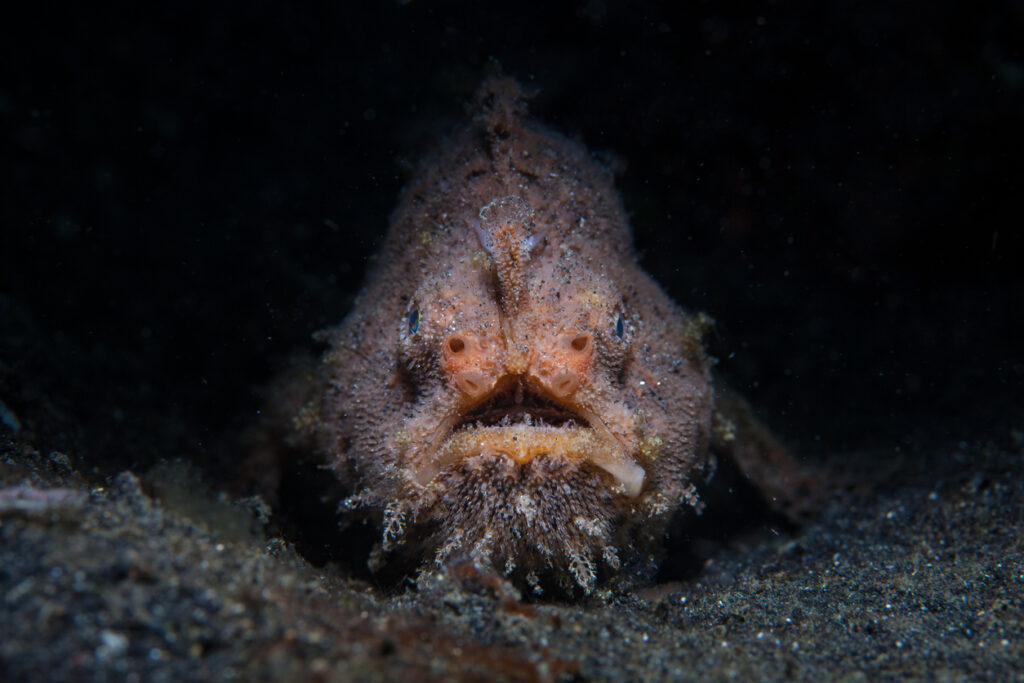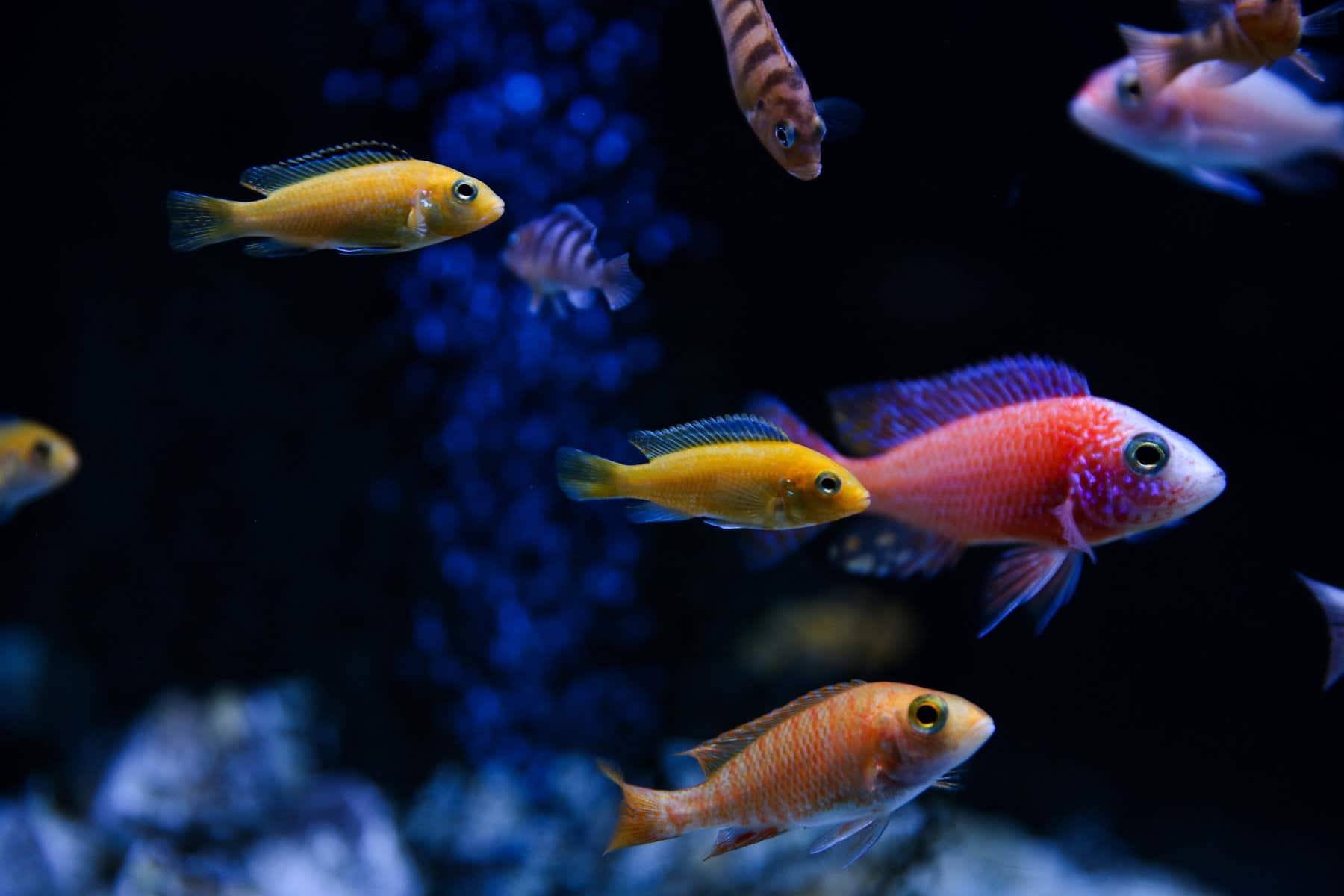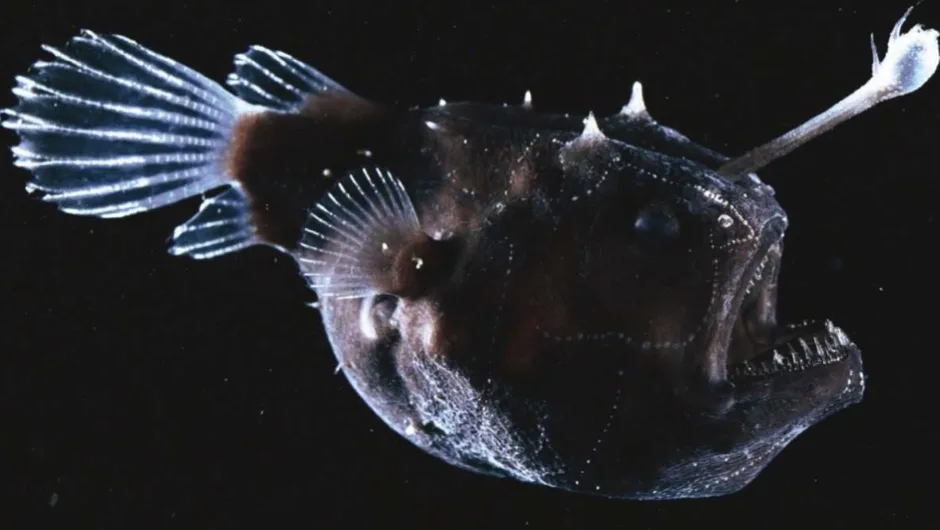Can Fish See in the Dark
Fish can see in the dark due to their special adaptation called tapetum lucidum, which reflects light. In dark or murky waters, this allows them to navigate and find prey more effectively.
Fish have excellent low-light vision, which helps them survive and thrive in various aquatic environments.

Credit: www.newscientist.com
How Vision Works In Fish
Fish are fascinating creatures that thrive in various aquatic environments. One of their intriguing abilities is their vision, which plays a crucial role in their day-to-day survival. Understanding how vision works in fish can provide valuable insights into their behavior and their ability to navigate through their surroundings.
Structure Of Fish Eyes
The structure of a fish’s eye is different from that of terrestrial animals, primarily to accommodate their underwater lifestyle. Fish eyes are spherical in shape, and their corneas are larger and flatter than those of land-dwelling animals. This allows them to focus light efficiently in the water. Additionally, fish eyes have a highly adaptable lens that can change shape, enabling them to switch between viewing objects that are near or far.
Rod Cells Vs. Cone Cells
Rod cells and cone cells are two types of photoreceptor cells found in a fish’s eye, responsible for vision in different light conditions. Rod cells are highly sensitive and function well in low-light environments, making them ideal for helping fish see in dimly lit or dark waters. These cells also aid in detecting movement, allowing fish to spot potential predators or prey even in low-light conditions.
On the other hand, cone cells are responsible for color vision and detail recognition. These cells require more light to function effectively and are particularly helpful when fish are hunting or identifying potential mates.
In some species, fish have a higher concentration of rod cells, while in others, cone cells dominate. This variation allows different fish species to adapt to their unique habitats and feeding behaviors.
Adaptations For Low-light Environments
Can fish see in the dark? This question has intrigued scientists and fish enthusiasts for years. While some fish species are known to possess enhanced vision in low-light conditions, others have evolved fascinating adaptations to navigate their dimly lit surroundings. Let’s explore two remarkable adaptations that enable fish to thrive in the dark: large eyes and pupils, and the tapetum lucidum.
Large Eyes And Pupils
One adaptation that facilitates vision in low-light environments is the possession of large eyes and pupils. Fish such as catfish, anglerfish, and deep-sea species have developed extraordinarily large eyes to gather as much available light as possible. These remarkable organs help them make the most of even the faintest sources of illumination.
Furthermore, the pupils of many fish species undergo modifications to optimize vision in low-light. Some fish have horizontal, narrow, or elongated pupils that can constrict or dilate as needed. These specialized pupil shapes and adjustments allow fish to adjust the amount of light entering their eyes, ensuring optimal vision in varying light conditions.
Tapetum Lucidum
Another adaptation that enhances fish vision in low-light environments is the tapetum lucidum, a reflective layer situated behind the retina. This structure acts like a mirror that reflects incoming light back through the retina, increasing the overall utilization of available light. The tapetum lucidum is responsible for the characteristic eyeshine seen in some fish, where their eyes appear to glow in the dark.
Although the tapetum lucidum improves sensitivity to low-light by reflecting light back through the retina, it does come at a cost. This adaptation sacrifices image sharpness and color perception. However, for fish navigating dark waters or depths where little natural light penetrates, the ability to detect even the faintest movements or silhouettes is more crucial for survival than precise visual details.
In conclusion, fish have evolved fascinating adaptations to thrive in low-light environments. Their large eyes and pupils, alongside the tapetum lucidum, allow them to maximize available light and detect potential prey or predators in the darkness. By understanding these remarkable adaptations, we can better comprehend the diverse capabilities of fish and appreciate their ability to navigate the depths where light rarely reaches.
Nocturnal Fish Species
Nocturnal fish species possess specialized adaptations that allow them to see in the dark. Their unique eyes and highly developed senses enable them to navigate and thrive in low-light environments, making them well-suited for nocturnal activities.
Introduction
Have you ever wondered how fish are able to navigate and find food in the darkness of the deep sea? It turns out that there are certain species of fish that are specifically adapted to thrive in low-light conditions. Known as nocturnal fish species, these fascinating creatures have unique abilities that allow them to see and survive in the dark.
Examples Of Nocturnal Fish
Nocturnal fish species comprise a diverse group of aquatic inhabitants. Let’s take a look at some examples:
- The Anglerfish: Found in the deep ocean, this peculiar-looking fish possesses a natural lure on its head that emits a bioluminescent glow, attracting prey in the darkness.
- The Flashlight Fish: Just like its name suggests, this fish has the ability to produce light. It has special light organs beneath its eyes, illuminating its surroundings and helping it navigate in dimly lit areas.
- The Goblin Shark: This unique species has a long, flat snout and a protrusible jaw filled with sharp teeth. It relies on its acute sense of smell to detect potential prey lurking in the dark depths.
Behavioral Patterns
Nocturnal fish species showcase fascinating behavioral patterns that enable them to thrive in the dark. Here are a few noteworthy examples:
- Camouflage: Many nocturnal fish have evolved intricate colorations and patterns that help them blend seamlessly with their surroundings. By remaining inconspicuous, they can actively search for prey while minimizing the risk of being detected by predators.
- Enhanced Sensory Systems: Nocturnal fish often possess heightened senses, particularly in the areas of vision and smell. Their eyes are larger, allowing them to gather as much available light as possible, while their olfactory organs are highly sensitive, enabling them to detect food sources even in the absence of light.
- Solitary Lifestyle: Several nocturnal fish species prefer to live solitary lives, venturing out under the cover of darkness to hunt. This reduces competition for resources and increases their chances of successfully foraging for food.
Overall, the ability of nocturnal fish species to adapt to and thrive in dark environments is truly remarkable. Through their unique adaptations and inherent behavioral patterns, these fascinating creatures have managed to conquer the challenges of navigating and surviving in the depths of the ocean’s darkness.

Credit: www.tynemouthaquarium.co.uk
Bioluminescence And Fish Vision
Have you ever wondered about the mesmerizing glow emitted by certain fish in the darkness of the ocean? This magical phenomenon is known as bioluminescence, and it plays a vital role in the vision of fish. In this blog post, we will explore how fish perceive bioluminescent light and the intriguing role it serves in their underwater world.
The Role Of Bioluminescence
Bioluminescence is the ability of living organisms to produce light through a chemical reaction. For fish, this astonishing adaptation serves various purposes that enhance their chances of survival. Let’s delve into some of the key roles bioluminescence plays in the underwater realm:
- Attracting Prey: Certain fish species possess bioluminescent organs known as photophores that assist them in luring unsuspecting prey. By creating a shimmering light display, these fish can easily entice smaller creatures towards their waiting jaws.
- Camouflage and Counterillumination: On the flip side, bioluminescence also helps fish blend seamlessly into their environment as a defense mechanism. They can emit light that matches the intensity and color of the ambient light, making it challenging for predators to spot them amidst the darkness.
- Communication and Mate Attraction: Bioluminescence is a crucial form of communication among fish. Some species use their ability to produce light to signal danger, assert dominance, or attract potential mates. It’s a language unique to the underwater world, visible only to those accustomed to deciphering its luminous code.
How Fish Perceive Bioluminescent Light
Now that we understand the importance of bioluminescence for fish, let’s explore how these remarkable creatures perceive the luminous glow. While human eyes rely on cones and rods to detect light, fish possess specialized structures called “rod cells” in their eyes that enhance their ability to navigate in dark environments:
- Enhanced Sensitivity: The rod cells in fish eyes contain a pigment called rhodopsin, which aids in low-light vision. This pigment allows fish to detect even the slightest traces of bioluminescent light, giving them a distinct advantage in the depths where sunlight barely reaches.
- Color Perception: Contrary to popular belief, fish are not colorblind. They are capable of perceiving various hues in bioluminescent light, allowing them to decipher subtle differences and detect potential threats or prey.
In conclusion, the fascinating world of bioluminescence and fish vision offers a glimpse into the spectacular adaptations nature has devised. It is through this remarkable interplay of light and perception that these underwater creatures navigate their mysterious habitats, ensuring their survival in the darkest depths of the ocean.
Evolutionary Advantages Of Night Vision
Fish and their ability to see in the dark is a fascinating topic, and understanding the evolutionary advantages of night vision can shed light on their survival strategies. Over time, fish species have developed remarkable visual adaptations that help them thrive in low-light environments. These adaptations are specifically geared towards enhancing their hunting and feeding abilities as well as enabling them to avoid predators.
Hunting And Feeding
In the depths of the oceans where sunlight cannot penetrate, fish rely on their night vision as a crucial hunting tool. In these dark conditions, some fish have evolved to possess large, sensitive eyes that can detect even the tiniest sources of light. This allows them to locate bioluminescent prey, such as small crustaceans and deep-sea organisms, which emit light as a means of communication or defense.
Additionally, certain fish species possess a unique structure called the tapetum lucidum, which enhances their night vision by reflecting and amplifying available light. This adaptation acts like a natural mirror, increasing the fish’s sensitivity to low-intensity light sources. With their remarkable night vision, fish are able to take advantage of the resources available in the darkness, giving them a competitive edge in the ecosystem.
Predator Avoidance
Fish with night vision have also developed enhanced abilities for predator avoidance. When faced with potential threats lurking in the dark, these fish can easily discern subtle movements and the silhouettes of predators. By being able to see in low-light conditions, fish can detect predators earlier, giving them the opportunity to flee or hide. This heightened sense of awareness enables them to make split-second decisions that can mean the difference between life and death.
Furthermore, fish with night vision have the advantage of being active during times when predators may have reduced visibility. This gives them a better chance of escaping detection and surviving. The ability to see in the dark allows fish to navigate their surroundings, locate shelter, and find food sources more effectively.

Credit: www.aquariadise.com
Frequently Asked Questions Of Can Fish See In The Dark
Can Fish See In The Dark?
Yes, fish are capable of seeing in the dark. They have a specialized layer of tissue called the tapetum lucidum which reflects light back through the retina, giving them enhanced vision in low light conditions. This adaptation allows them to navigate and hunt effectively in dark environments.
Conclusion
Fish possess incredible adaptations that allow them to navigate and thrive in dimly lit environments. Their specialized visual systems, such as tapetum lucidum and extra photoreceptor cells, enable them to see in low light conditions, ensuring their survival and hunting success.
Understanding the unique abilities of fish to see in the dark sheds light on the fascinating adaptations that have evolved in the underwater world. So, the next time you marvel at fish swimming effortlessly in the depths, remember their remarkable vision capabilities that help them master their dark domain.
{ “@context”: “https://schema.org”, “@type”: “FAQPage”, “mainEntity”: [ { “@type”: “Question”, “name”: “Can fish see in the dark?”, “acceptedAnswer”: { “@type”: “Answer”, “text”: “Yes, fish are capable of seeing in the dark. They have a specialized layer of tissue called the tapetum lucidum which reflects light back through the retina, giving them enhanced vision in low light conditions. This adaptation allows them to navigate and hunt effectively in dark environments.” } } ] }




